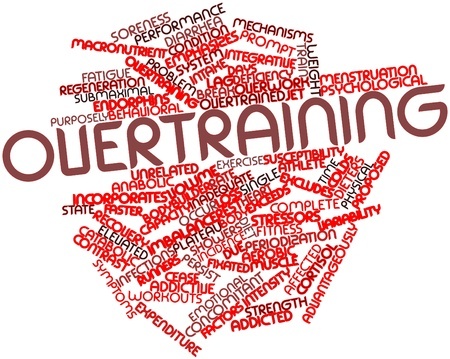
Exertional rhabdomyolysis is a fairly unknown and rare, but dangerous consequence of overtraining that every certified personal trainer should become aware of. Read on to find out more about this condition, its deleterious effects, and the signs to look for
What is Rhabdomyolysis
Rhabdomyolysis is predominantly a disease of the musculoskeletal system in which rapid destruction of muscle tissue leads to the leakage of myoglobin into the urine, rendering its color brown. Myoglobin is a protein component of the muscle cells that is released into the blood when skeletal muscle is destroyed.
This dangerous muscle condition is a result from overexertion, trauma, medications, or an underlying health condition. Common signs and symptoms of rhabdomyolysis include:
- weak muscles
- muscle stiffness
- muscle pain
- change in your urine to a dark color
One of the dreaded complications of rhabdomyolysis is kidney failure. This can occur for a variety of reasons. Direct injury to the kidney, and plugging of the kidney’s filtering tubes by the muscle proteins being released, are among the major causes of kidney function impairment in the presence of rhabdomyolysis.
The etiology of rhabdomyolysis is complex; yet upon reading a list of the most common causes, one cannot help but think that perhaps a misguided training regimen leads the athlete to this dangerous place. The list includes:
- muscle trauma
- physical torture
- extreme physical activity
- low circulating electrolyte levels (phosphate, potassium, or magnesium) in the blood
How Rhabdomyolysis Can Happen: A True Story
As a burgeoning bodybuilder, an athlete can train hard, abide faithfully by the trainer/coach’s instructions, eat clean, and take in all the proper supplementation to increase muscle mass. And while the scope of a developing physique is largely predetermined by its genetic makeup, bodybuilders soldier on.
When something goes awry in the game plan, when the body seems to betray itself and head down a path of destruction, the questions begin to surface. Was it the pre-competition diet? Was cardio insufficient? Was additional muscle mass required? Or…was the trainer ill-equipped to take a client from the gym to the competition stage?
A fellow athlete shared her story with me many years ago, actually while I was fully engaged in competitive bodybuilding. Now, as a personal trainer, I am taking a look at this through different eyes…and mine are now wide open. This story illustrates just how easily we can derail a client’s progress without ever having the intention to do so. It isn’t thoughtfulness that some coaches lack; rather it is a deeper understanding of the physiology of the human body as it proceeds through arduous stage-perfect preparation.
After placing 4th in her first competition, this athlete was hooked on the sport. To build a larger and stronger physique to present on stage for her 2nd competition a brief 3 months later, she followed her trainer’s instructions to the letter, only to be rewarded with a tremendous amount of pain in the quads and calves. The discomfort was so intense that it interfered with scheduled cardio sessions on the elliptical machine. Conquering the pain and rising above it, she continued to prepare for the show; but at 11 weeks out became quite ill and suffered a 4-week setback.
Taking several weeks to rest, she now had only three weeks to go before hitting the stage. Complete exhaustion as well as swelling in the abdomen, calves, and feet appeared with a vengeance. Muscle soreness was so severe that rolling over in bed took everything out of her. The pre-competition program set forth by the coach was extreme: 90 minutes of cardio each morning and afternoon, with an additional 60 minutes every evening.
Nutritional intake had been reduced to chicken, fish, mushrooms, and spinach. Complex carbs had been drastically slashed to a mere ¼ cup of oats and ¼ cup of rice for the entire day. The abdominal swelling caused her trainer to reprimand her, accusing her of “cheating” and not adhering 100% to the meal plan.
The 3rd competition went extremely well; yet afterward, instead of celebrating with fellow athletes, the competitor could barely move off the bed upon returning to her hotel room. Despite the irrepressible fatigue, sleep was elusive. Muscle spasms interspersed with dry heaves, and even days later, she was barely able to walk up and down stairs. Soon a strange new phenomenon had presented itself –her urine had turned from the usual yellow to a frightening shade of dark brown.
Ultimate Mechanical Failure
How could this have happened to a young athlete who took such pride in caring for her body?
Today, this brave former competitor continues to remain as active as her condition allows but has prudently taken weightlifting down to a more reasonable and safe level. The best advice she could give me was this: research and KNOW your trainer/coach. Placing complete and unwavering trust in an individual with little or no experience in competitive training can prove very dangerous.
I share this story not to scare you away from personal training serious clients. Rather, I urge you to do YOUR research before agreeing to take a client to the stage. Know the individual’s health history, prior competition experience…but most of all, ask the client just how much he/she is willing to risk by placing his/her body under extreme duress for the next 13 weeks.
Ask yourself how prepared and competent you feel to address every single issue that may arise regarding this sort of training regimen. Pride in your talents has no place here, so be certain of your answer. A client’s welfare must take top priority over the glory of coaching a 1st place winner.
References:
1.http://www.webmd.com/a-to-z-guides/rhabdomyolysis-symptoms-causes-treatments#2
2.https://www.ncbi.nlm.nih.gov/pubmedhealth/PMH0055564/
3.http://www.healthline.com/health/rhabdomyolysis
4.http://emedicine.medscape.com/article/1007814-overview
5.https://www.ncbi.nlm.nih.gov/pubmed/18091694
6.https://www.ncbi.nlm.nih.gov/pubmed/7934015
7.http://www.stack.com/a/rhabdomyolysis
8.https://www.researchgate.net/publication/7048809_Rhabdomyolysis_in_a_bodybuilder_using_steroids
9.http://crossfitimpulse.com/rhabdo-and-crossfit/
10.http://yourlivingbody.com/2014/08/25/return-to-physical-activity-after-rhabdomyolysis/







